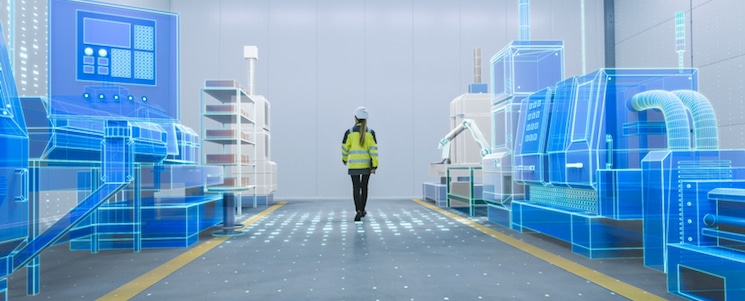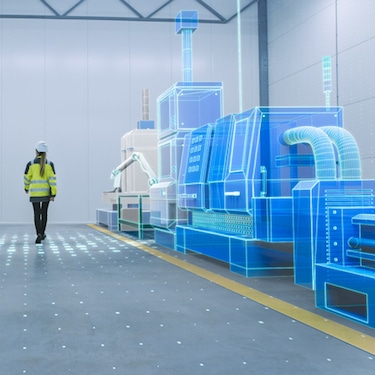
Having been involved in manufacturing operations for over 50 years as an end-user, process Manufacturing Execution System (MES) software vendor, engineering consultant, and market analyst, the evolution of software on the plant floor has been fascinating. The IT versus OT debate has been going on pretty much since the early 1980’s when the personal computer made its debut in the factory. MES has been part of that evolution as it has shifted from a localized shop floor control application – typically either PC or minicomputer based – to what is now increasingly becoming a Cloud-based critical business application. As a result of this transformation, look for continued MES investment in 2022 and beyond.
COVID19 has disrupted the status quo for virtually every manufacturing sector. Disruptions in the labor market, supply chain, and consumer preference in 2020 and 2021 forced manufacturers to place far greater focus on agility and resilience. Looking forward to 2022, continued MES investment will be driven by two primary factors:
- Long-term strategies – typically driven by technology investment, including evolutionary forces such as the Industrial IoT and the Cloud, and
- Short-term strategies – with an emphasis on improving operational excellence, tied to agility, sustainability, and resilience.
My inner analyst perspective, naturally, is to make predictions as to what the next 12 to 18 holds for end-users and suppliers in the MES market space. Here are my top three:
1. Continued MES Investment Will be Driven by IT/OT Harmonization
With businesses increasing their focus on flexibility, operational agility in manufacturing has become a key executive priority. Operations management and IT leadership will use 2022 to drive MES to become a critical bridging app that links the world of OT and IT. However, it won’t result in IT/OT convergence, which will remain as elusive as it has been for the last 30+ years.
Instead, we will see IT and OT functions using MES as a commonality, particularly where MES has been deployed in what is typically an IT-managed Cloud. MES has always been a path from automation to ERP or other business systems. As MES expands its footprint into quality, maintenance, and product configuration, it will take on an even larger role as an integration hub for many aspects of operational management. MES will increasingly expand its functional footprint in this scenario.
Learn more about the integration of IT and OT systems here: What is IT/OT Convergence – and Why You Should Care?
2. Architecturally, MES Becomes Gateway to Cloud, Microservices & More IIoT Deployment
The market is already seeing MES deployment in the Cloud increasingly becoming the norm rather than the exception. In 2022, this trend will continue. MES providers without a Cloud-centric model will start becoming marginalized. Cloud-first solutions will become the favored choice within the next 24 months.
And, given the IT involvement identified above, MES suppliers that can deploy in public Clouds, have microservices-based architectures, and can readily integrate with IIoT devices in a hybrid environment will become IT’s preferred suppliers. This transformation will then drive investment in other application areas such as quality, EH&S, maintenance, and other shop floor tools. What will emerge is integrated ecosystems becoming part of a larger manufacturing Cloud deployment, often integrating with Cloud-based ERP suites.
3. MES Market Will Remain Volatile; Collaboration Foreshadows Further Consolidation
The last decade has seen considerable MES consolidation both in-process and discrete MES suppliers. Whereas most MES acquisitions that were completed over 10 years ago were led by automation companies, those that occurred during the last ten years have been a mix of ERP and PLM vendors jumping into the MES M&A fray. In the future over the next several years, look to see a new dynamic. As MES expands its footprint to include QMS, MRO, SQM, EH&S, and other shop floor functionality, expect the remaining independent MES companies to either partner with, merge with, or acquire firms in these spaces.
Likewise, larger players in these adjacent spaces could equally move to acquire weaker MES players as a shortcut to adding MES capabilities to their portfolios. As the last 24 months have shown, the creation of manufacturing and engineering software platform players such as AVEVA buying OSIsoft and Emerson merging its software business with Aspen Technology as a new entity, MES has increasingly been seen as a critical portfolio element.
No longer the stepchild application sitting in the gray space between automation and business systems, vendors recognize MES is where manufacturers are investing in more than ever before. Microsoft Azure, AWS, and even Google will be using 2022 to establish their credibility in the MES space – either directly or via their partnerships with the MES vendor community.
The implications for end-users are significant. Manufacturers will need to decide if their current MES approach can carry them into the future. For many, the answer will be that 2022 will be the year to make a move to a more advanced and integrated manufacturing operations management approach and pick a vendor that is adapting to the technology shifts and understands that MES must grow functionally.

